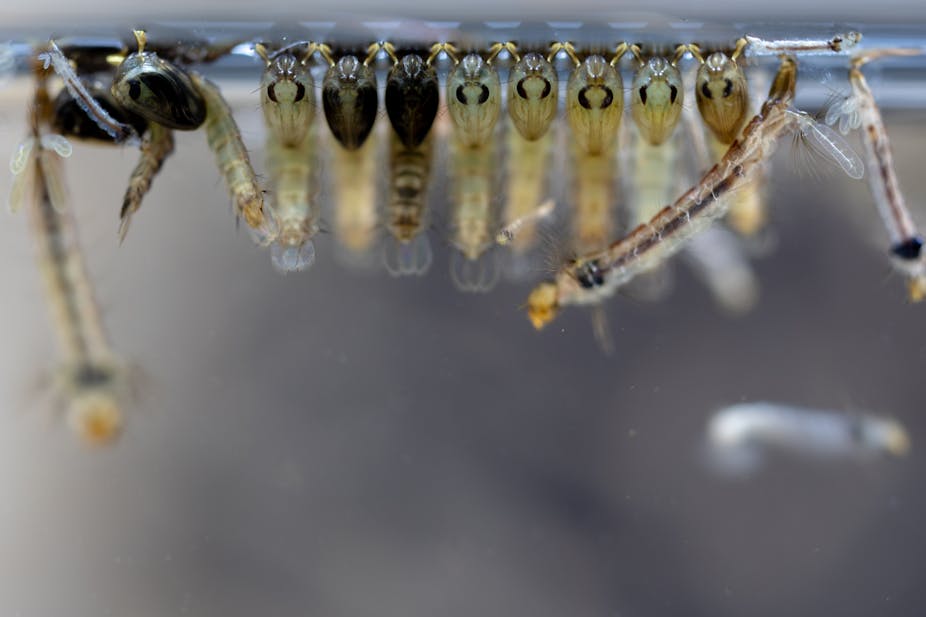Collecting Live Food For Aquarium Fish
Collecting Live Food For Aquarium Fish
 |
If you've never fed your aquarium fish live food before, now is the time to get outside and collect some tasty morsels for your fish. Nothing compares with the variety of live insects, crustaceans, and worms nature provides during the warm months of the year. If you wish to breed fish, live food is the best way to condition breeders prior to spawning. Collecting ToolsThe first thing you need to do is gather together some simple collection tools. It's not necessary to spend a fortune on these items. In fact, many are things you already have around the house. BrushesSmall soft brushes are excellent for brushing insects, eggs, and worms off plants and rocks. No need to invest in expensive ones, or even new ones. Garage sales, flea markets, and department store craft isles are all sources for inexpensive brushes for collecting live foods. Plastic JarsPeanut butter, mayonnaise, and other clear, wide-mouthed, plastic jars are excellent for collecting live food. Why not use glass? Glassworks fine but can be broken, so stick with the more durable plastic containers. Inexpensive plastic food storage containers also work well if they are wide-mouthed. NetsThe type and size of the net will vary based on the method and type of live food being collected. A large windsock shaped net is excellent for sweeping up insects in the tall grass. Nets with square or rectangular openings are good for use in water, as the straight edge allows the net to be dragged closely along the bottom. |
Where to Look
You won't have to go far, most places are close to home. Collecting fresh foods for your fish can be turned into a fun family activity. If you live in the city, take the family on a trip to a park with a pond or creek, go to a campground by some water or woods, or simply go for a drive in the country.
Plants and Trees
Almost any plant or tree in your yard has a variety of insect life that would make a tasty fish meal. Small soft-bodied insects are suitable for virtually all fish. Cichlids enjoy larger hard-shelled insects, such as small beetles. Use a small brush to gently brush the insect off the plant and into a jar with a little water in the bottom. If the insect clings to the brush, dip it in water to dislodge it. Once you have a nice collection, swirl the water in the jar to dislodge the insects from the sides, and pour it right into the aquarium.
Sidewalks
Yes, look at your sidewalks, those ants are tasty morsels for your fish. Place a small piece of ripe fruit in a clean jar tipped on its side (a plastic peanut butter or mayonnaise jar works well). Once the fruit is covered with ants, pick up the jar and add enough water to cover the fruit. Cap the jar and swirl it gently to wash the ants off the fruit. Remove the fruit and pour the water with the ants into the tank. If you are fortunate enough to locate an ant nest, scoop up the eggs and feed those to your fish as well. The eggs are nutrient-packed, and your fish will gobble them up like candy.
Patio Blocks and Rocks
Turn over a rock or sidewalk brick, and you'll usually find worms, larvae, and even insect eggs. If you live near a wooded area, take a walk and turn over dead branches, piles of leaves, etc. You'll find plenty of delectable live food for your aquarium fish. Use your brush or a stick to pick them up and drop them into a jar with a little warm water, then toss them in the tank when you get back.
Ponds, Rivers, and Ditches
Wherever water collects you'll find an excellent source of live food for your fish. Dragging a large net through the water will yield many morsels. Daphnia can be found in abundance during the warm summer months, as are mosquito larvae. Place your harvested critters in a jar of water to keep them alive on the trip home.
Fields and Pastures
A field or pasture is an excellent source of live food. Select a large fine-meshed net that tapers to a small end, similar to the shape of a windsock. Swish it quickly through the grass and put the contents into jar and cap it. Taking a slow drive at dusk with a net held outside the car window will often yield some interesting insects, not to mention it's a lot of fun (dogs know what they are doing when they hang their head out of the car window).
After a Rainstorm
Run outside! The worms are out and waiting for you to scoop them up. Larger fish will eat them whole. Dice them up before feeding to the smaller fish.
Comments
Post a Comment